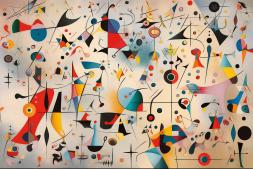Exploring the Evolution from Minimalism to Maximalism in Art

Art has always been a reflection of cultural shifts, societal values, and individual expression. Over the decades, art trends have evolved dramatically, moving through phases that often contrast each other. One fascinating journey is the transition from minimalism to maximalism — two distinct styles that represent different philosophies and aesthetics within the art world.
Understanding Minimalism: The Essence of Simplicity
Minimalism emerged in the late 1950s and 1960s as a reaction against the complexity and emotional intensity of abstract expressionism. Artists focused on simplicity, using clean lines, monochromatic palettes, and geometric shapes to emphasize form and material over narrative or symbolism. This movement sought to strip art down to its essential elements, creating pieces that evoke calmness and clarity. Notable minimalist artists include Donald Judd, Agnes Martin, and Frank Stella.
The Rise of Maximalism: Celebrating Complexity and Abundance
Contrasting with minimalism’s restraint, maximalism embraces boldness through vibrant colors, intricate patterns, layered textures, and eclectic compositions. It gained momentum in recent years as artists began exploring more expressive freedom and emotional richness in their work. Maximalist art often tells elaborate stories or conveys complex ideas by combining diverse elements into a cohesive whole. This approach reflects contemporary culture’s embrace of diversity and abundance rather than simplicity.
Cultural Influences Shaping These Trends
Both minimalism and maximalism are deeply influenced by their cultural contexts. Minimalism aligned with post-war desires for order amid chaos and was connected to modernist ideals valuing function over decoration. On the other hand, maximalism resonates with today’s digital age where information overload is common; it echoes a celebration of individuality amidst mass consumer culture through extravagant visual displays.
How Artists Navigate Between These Styles Today
Many contemporary artists do not strictly adhere to one style but blend minimalistic clarity with maximalist complexity depending on their message or medium. This fluidity allows for innovative artworks that challenge traditional boundaries while engaging diverse audiences. For example, some installations combine sparse structural designs with bursts of colorful details that draw viewers’ attention dynamically.
What This Evolution Means for Art Lovers And Collectors
Understanding this shift helps art enthusiasts appreciate how societal changes influence artistic expression over time. Collectors can diversify their portfolios by recognizing value both in minimalist pieces prized for elegance and timelessness as well as maximalist works cherished for vibrancy and storytelling depth. Ultimately, this evolution highlights art’s capacity to adapt continually while offering fresh perspectives.
The journey from minimalism to maximalism showcases the dynamic nature of artistic trends shaped by historical moments and human creativity’s boundless scope. Whether you prefer clean simplicity or rich complexity in your art experience, exploring these movements enriches our appreciation for how culture translates into visual language across decades.
This text was generated using a large language model, and select text has been reviewed and moderated for purposes such as readability.











